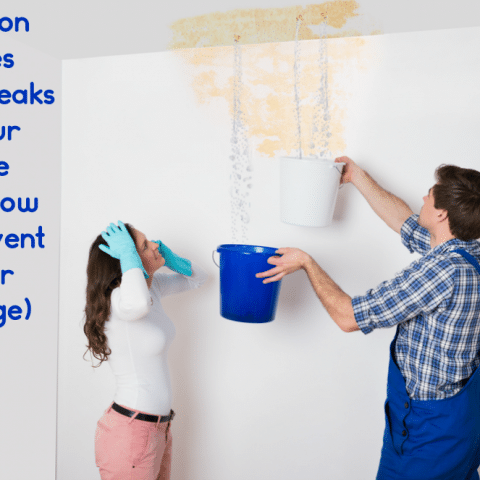Right here below you might get a bunch of wonderful points when it comes to Detecting hidden plumbing leaks.

Early discovery of dripping water lines can minimize a possible catastrophe. Some small water leaks might not be noticeable.
1. Analyze the Water Meter
Inspecting it is a guaranteed method that assists you find leaks. If it moves, that shows a fast-moving leakage. This indicates you may have a sluggish leakage that might also be underground.
2. Check Water Intake
If you find abrupt changes, regardless of your intake being the very same, it indicates that you have leaks in your plumbing system. A sudden spike in your costs suggests a fast-moving leak.
On the other hand, a stable rise on a monthly basis, despite the very same routines, reveals you have a sluggish leakage that's also slowly intensifying. Call a plumber to completely check your building, specifically if you really feel a warm area on your floor with piping below.
3. Do a Food Coloring Examination
When it comes to water consumption, 30% comes from bathrooms. If the shade in some way infiltrates your bowl during that time without flushing, there's a leakage in between the tank as well as dish.
4. Asses Outside Lines
Don't neglect to inspect your outdoor water lines as well. Must water permeate out of the link, you have a loosened rubber gasket. One small leakage can waste bunches of water and also increase your water costs.
5. Evaluate and also Evaluate the Scenario
House owners should make it a routine to check under the sink counters as well as also inside closets for any kind of bad odor or mold growth. These 2 warnings indicate a leak so timely focus is called for. Doing routine assessments, also bi-annually, can conserve you from a significant problem.
Much more significantly, if you understand your house is already old, keep a watchful eye on your heaters, hose pipes, pipes etc. Look for stainings as well as deteriorating as the majority of pipelines as well as home appliances have a life span. They will also normally degrade because of tear and also use. If you think leaking water lines in your plumbing system, do not wait on it to escalate. Call a professional plumber right away so you do not end up with a horrible mess in your home.
Early detection of dripping water lines can minimize a possible calamity. Some little water leaks may not be visible. Inspecting it is a proven method that aids you uncover leakages. One tiny leak can squander lots of water and increase your water expense.
If you think leaking water lines in your plumbing system, don't wait for it to rise.
The Dangers of Undetected Water Leaks
Mold
One of the most common results of undetected water leaks in your home is mold. Under the right conditions, mold can begin to grow and spread in just a day or two.
Moisture from water leaks combined with humidity and lack of ventilation allow mold spores to germinate and start spreading.
And while household mold doesn’t carry the same health risks as substances like asbestos, they can cause allergic reactions in people sensitive to them or with asthma.
Structural Damage
When water leaks occur in places we can’t see — above the ceiling, behind walls or beneath floors — they often have time to do some serious damage before making themselves known.
You might notice cracks or bubbles appear in your walls or a slow drip or water from the ceiling.
These are signs of water leaks and buildups in the structure of your home. If you don’t jump on these problems soon enough, the wood frame that supports your house could start rotting, leading to costly repairs and increasing the risk of disasters like ceiling or wall collapses.
Water Waste
According to the Alliance for Water Efficiency, the average home can lose anywhere from 2,000 to 20,000 gallons of water per year due to leaks.
High numbers like that might make you imagine a burst pipe spewing out water. But believe it or not, even a small, constant drip from a kitchen sink could add up to over a thousand gallons of wasted water in a single year.
And if you live in a place where you pay for every gallon of water you use, that adds up to a lot of dollars down the drain. So we understand leaks are bad. Let’s take a look at some of the common (and not-so- common) water leaks you might find around your home.
Flush Valve Flapper
The flush valve flapper is a rubber flap that sits above the flush valve at the bottom of the tank. It’s attached to the flusher with a chain. Over time, it can get worn out and lose its seal, causing an endless flow of water into the toilet bowl.
These leaks are hard to detect since they’re usually silent, but there’s a little insider trick you can use with just a little dye or food coloring:
Put a few drops in the toilet tank. Check the water in your toilet bowl 15 minutes later. If any of the color made it into the toilet bowl, you’ll know what the culprit is.
Fill Valve
The fill valve is what replenishes your toilet’s tank water after you flush. If you’ve ever looked inside your toilet tank and seen water gushing out of an upright plastic valve, that’s a faulty fill valve.
https://meetflo.com/blogs/flo/how-to-find-and-repair-water-leaks-a-comprehensive-guide

Hopefully you liked our topic about Locating water leaks. Thanks a lot for finding the time to read through our post. Kindly take a moment to distribute this blog posting if you appreciated it. Thank you so much for taking the time to read it.